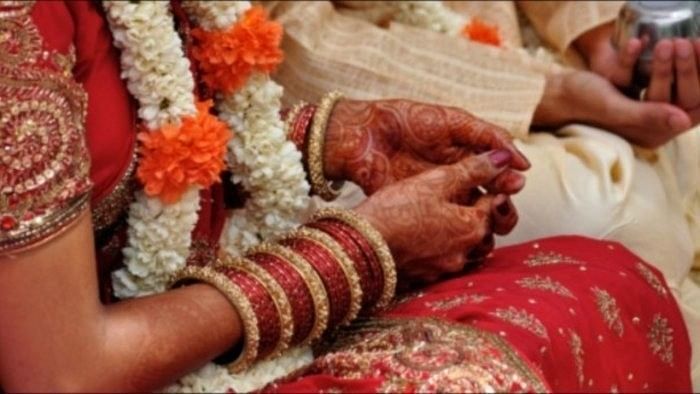
Representative image of child marriage.
Credit: iStock Photo
Early child marriages, high divorce rate dominate the lives of adolescent tribal girls in Maharashtra
Girls in the tribal communities of Pardhis, Bhils and Thakars residing in and around the districts of Pune, Ahmednagar, Aurangabad and Amravati are facing issues like early child marriages and high divorce rate, according to a report by Child Rights and You (CRY).
Girls in these communities are married off for financial reasons, to repay debts and/or arrange for money to get male members of the family out on bail in case of an arrest. The transaction of money depends on the financial condition of the grooms’ families and on the looks and physical features of the girls themselves.
The amount can range from Rs 25,000 to Rs 50,000 and at times even more than a lakh. In many cases girls are married off to repay the family's debt. When unable to repay the debt, the girl is married off to the lender’s home without her consent as a ‘settlement.’ In many other cases, the girls are married off to receive the money, required to release a man who is in jail for some criminal activities.
Child marriages are quite high in the communities. Girls between the ages of 10 years to 15 years are married off early and often ‘bought’ and ‘sold’ in return for settling monetary debts amongst the community members. The occurrence of girls being abandoned after a year or two of marriage is common. These girls often end up being further exploited when they are remarried by their parents.
As per a study conducted by CRY, between 2020 and 2022, remarriage of a total number of 396 girls from Pardhi, Bhil and Thakar community have taken place.
As per the district level survey of 2022 conducted by CRY, the tribal communities (mostly belonging to the Scheduled Tribe category) of Pardhis, Bhils and Thakars together constitute 1 per cent of the total population of Maharashtra compared to the other politically strong Dalit and Tribal communities in the state.
With almost no representation at the state level as well as in other levels of society, they are at the risk of losing their individual identities.
According to Kumar Nilendu, General Manager, Development Support, CRY – West, “The nomadic communities often face a different set of hardships and hence, children from these communities are highly disadvantaged. Also, the age old customs and traditions coupled with lack of any worthwhile political representation results into larger complex issues to deal with."
"CRY has been trying to address the issues of children from these communities and we have been relatively successful in doing so. We have tried to intervene with the traditional panchayat systems in these communities and have brought in changes in their thinking process by bringing in youths with relatively modern outlook into these panchayats," Nilendu added.